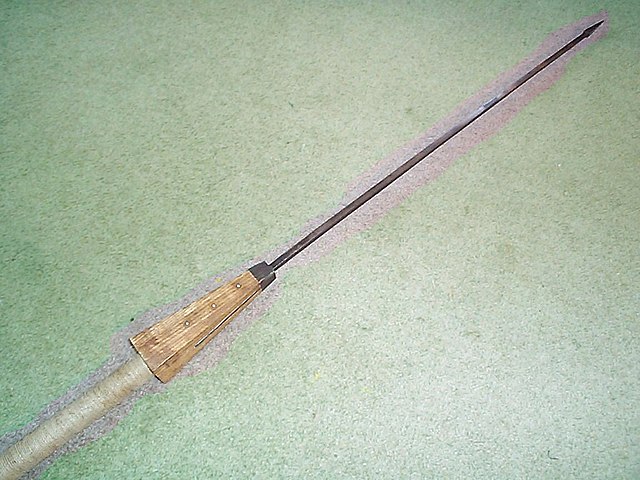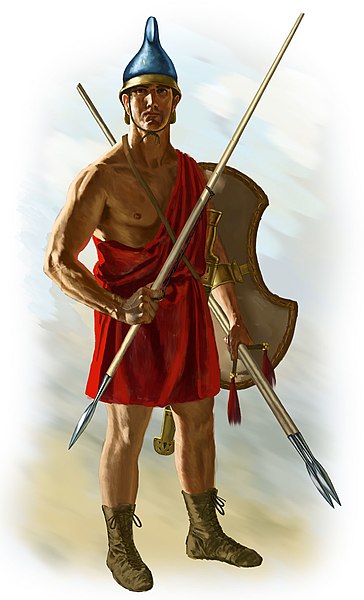The pilum was a javelin commonly used by the Roman army in ancient times. It was generally about 2 m long overall, consisting of an iron shank about 7 mm (0.28 in) in diameter and 600 mm (24 in) long with a pyramidal head, attached to a wooden shaft by either a socket or a flat tang.
Pilum
Legionaries carrying pila, as depicted on the Tropaeum Traiani
Reconstruction of a post-Marian pilum
Close-up of re-enactment pila
A javelin is a light spear designed primarily to be thrown, historically as a ranged weapon. Today, the javelin is predominantly used for sporting purposes such as the Javelin throw. The javelin is nearly always thrown by hand, unlike the sling, bow, and crossbow, which launch projectiles with the aid of a hand-held mechanism. However, devices do exist to assist the javelin thrower in achieving greater distances, such as spear-throwers or the amentum.
Javelin thrower. Bronze, Laconian style, third quarter of the 6th century BC
Agrianian peltast. This peltast holds three javelins, one in his throwing hand and two in his pelte hand as additional ammunition
A depiction of a javelin thrower on an ancient Greek vase, ca. 450 BC. Attributed to the painter of the Brussels Oinochoes.
Reconstruction of a post-Marian pilum







